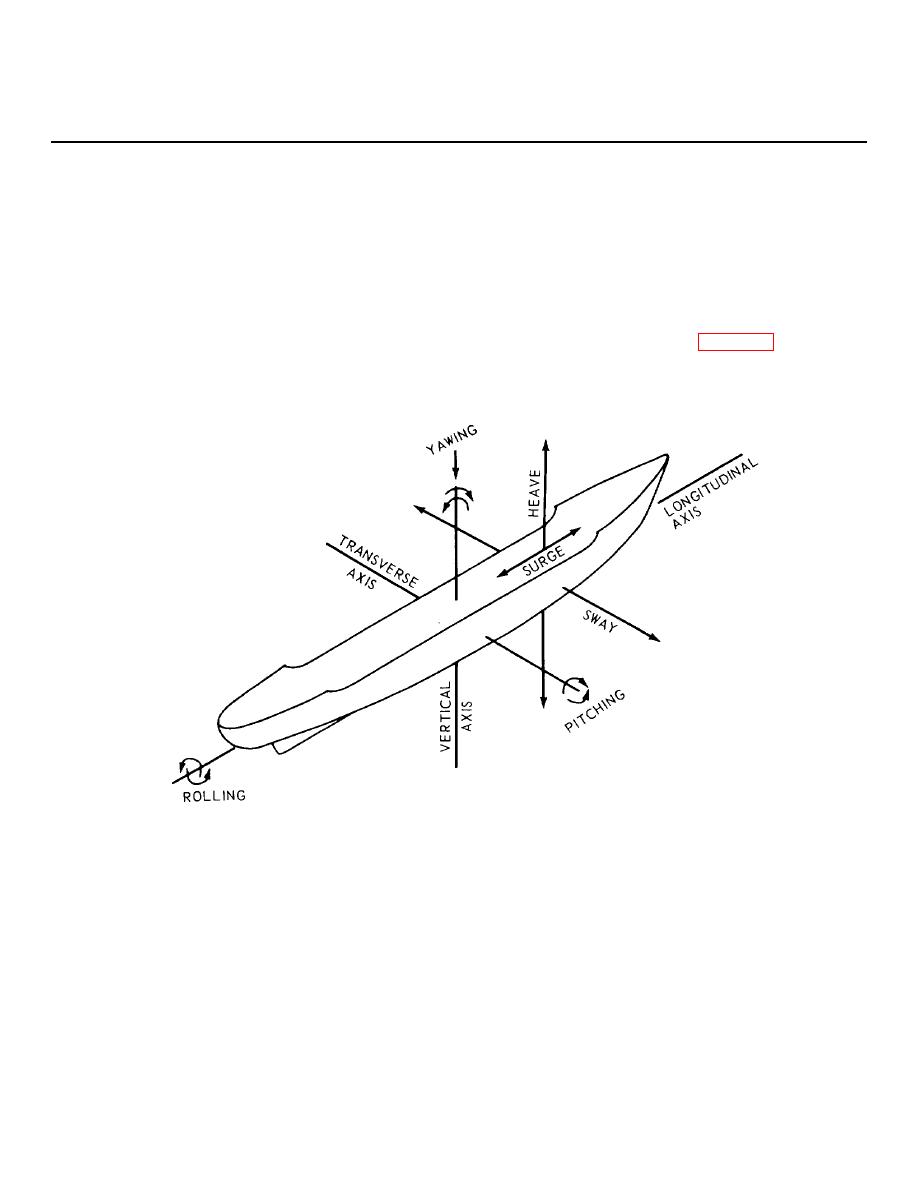
TM 55-607/NAVSEA OP 3221 Rev 2
CHAPTER 6
SECURING PROCESS
6-1. Introduction
Shifting cargo presents hazards, as the ship may be severely damaged by the physical impact or the actual detonation of
the cargo. It is imperative that all precautions be taken to protect the cargo from mechanical shock, fire, high
temperature, moisture, or any other hazards that could lead to a catastrophe. In transit, repairs to dunnaging or the
resecurement of shifted cargo are difficult and dangerous; consequently, the dunnaging system must be designed to
resist, without failure, maximum anticipated forces generated by the ship in response to the marine environment. This
chapter describes the general theory for dunnaging marine cargo and the sequence in which stowage techniques are
applied during shiploading.
6-2. Mechanics of Ship Motions
Ship motions cause the cargo to apply different loads against the dunnaging system. While the ship is underway, the
cargo is subjected to six basic motions-roll, pitch, yaw, heave, sway, and surge as illustrated in figure 6-1. Combinations
of these motions are common but difficult to describe. Ship vibrations caused by propeller and engine action also agitate
the cargo continuously. For the purpose of this manual, loads due to ship motions will be described as either "static" or
"dynamic."
Figure 6-1. The six basic ship motions.
6-1


